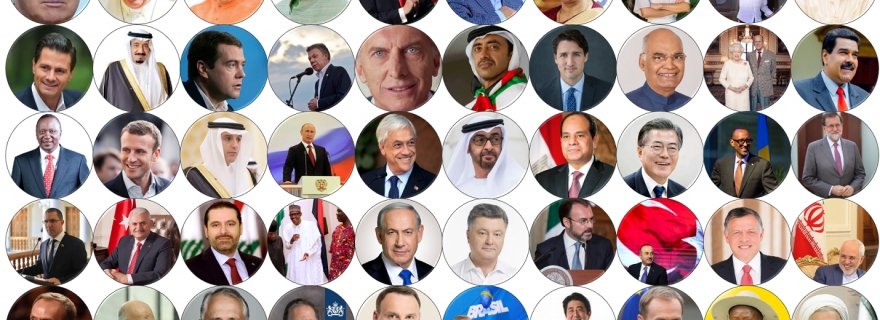Ctrl-Alt-Delete: is Digital Diplomacy Worth the Risk?
The emergence of social media networks has changed diplomacy into a more open, transparent and participative profession. When used properly, and handled with skill, digital diplomacy can be a very useful addition to traditional diplomacy.
In 2009, Secretary of State Hillary Clinton launched her “21st century statecraft” initiative, which was aimed at incorporating the use of social media networks more systematically in the daily work of the US Department of State and its representatives around the world. Foreign politics and diplomatic practice, according to Clinton, had to become more transparent and more visible to citizens. International affairs had to be taken out of government offices, into the streets. Back then, it was unthinkable that - rather than opening a newspaper or putting on the television to watch the news - you would turn to your Twitter feed to read the latest updates on American foreign policy. Now, barely ten years after Clinton’s initiative, Twitter has become the primary place to read official statements from the US president. President Trump uses Twitter as the main channel to send out messages to his online audience of 56 million followers.
Apart from the US government, other governments have also widely become aware of the fact that social media networks have become one of the most important tools of soft power. The extensive online coverage of the G20 summit in Buenos Aires is a recent example of how the use of digital diplomacy, also sometimes called “e-diplomacy”, “cyber-diplomacy” or even “twiplomacy”, is more popular than ever. President of the European Council Donald Tusk, (in)famous for his frequent use of “Instagram diplomacy”, used his Instagram ‘story’ to update his followers on the discussed topics during the summit. German Chancellor Angela Merkel shared photos of the breakfast she had with Russian President Vladimir Putin and Prime Minister Conte of Italy posted the selfies he took with other world leaders during his stay in Argentina.
The growing popularity of social media-based diplomacy in the past ten years does, however, not mean that it has been immune from criticism. The use of social media in politics and diplomatic affairs has mainly been criticized for its ineffectiveness and its dangers. Dangers include: hacking, leaking of information (e.g. Wikileaks) and the use of fake online identities. Social media networks can also easily be used for propaganda, spreading disinformation and interference in national elections through political advertisements. Donald Trump, who undoubtedly changed the tone of discourse on Twitter since he became president, has frequently highlighted the risks of using social media in foreign policy by using tweets to threaten with missile attacks and (trade) war and by publicly tweet-shaming allies and opponents (Trump referred to North-Korean leader Kim Jong Un as “little rocket man” and called president Assad of Syria a “gas killing animal”).
A risk of a different kind is that the Internet never forgets: entirely removing an online message is impossible and blunders are easily made. One tweet can have poisonous effects for months. Donald Tusk, for example, quoted the thoughts of his wife by tweeting “one Donald is more than enough!” a few days before the US election. Another well-known example of a diplomat damaging his reputation by sending out a tweet was when former Swedish foreign minister Carl Bildt tweeted: “Leaving Stockholm and heading for Davos. Looking forward to World Food Program dinner tonight. Global hunger is an urgent issue!”
The fear of security risks, confidentiality breaches and reputation damage has been hampering the implementation of digital diplomacy. New research shows that risk avoidance has “impeded the adoption of digital diplomacy and has prevented foreign missions from keeping pace with the advancement of digital technologies.” Afraid to burn their fingers, diplomatic practitioners seem to become more reluctant when it comes to using social media in their work. They prefer to stick to traditional ways of conducting diplomacy, characterized by secretive communication hidden away from citizens.
It is a pity that the positive potential of digital diplomacy seems to be overshadowed by the dark side of technology these days. The emergence of social media networks has changed diplomacy into a more open, transparent and participative profession. Moreover, social media networks help to realize one of the most important objectives of diplomacy: reaching out to broader audiences (and younger audiences in particular). When used in a proper and strategic way and when handled with skill, digital diplomacy can be a very useful addition to traditional diplomacy. In 2021, 3.02 billion people (38% of the world population) are expected to be on social media. In order to be able to reach out to these people, and as long as the benefits outweigh the risks, it is important for diplomats to not press Control-Alt-Delete on digital diplomacy. Diplomats should not be afraid to make mistakes on social media; “the biggest mistake is not to be on it”.
Cover Photo: Twiplomacy study 2018 (https://twiplomacy.com/blog/twiplomacy-study-2018/)


